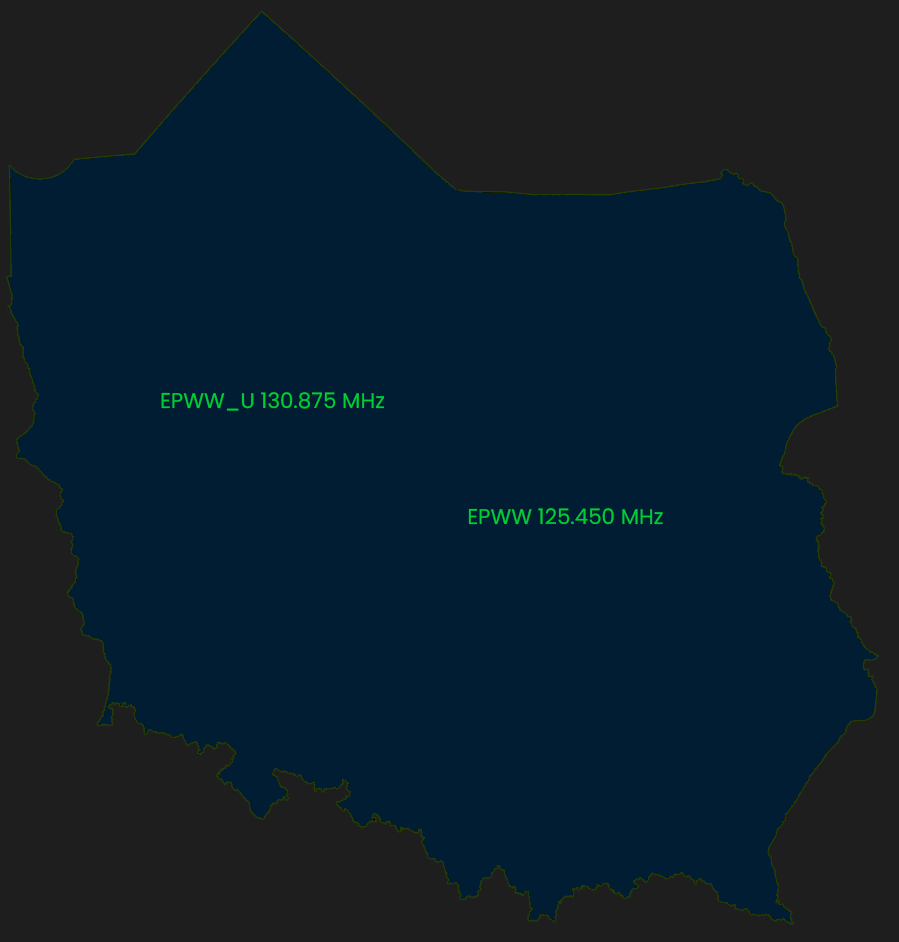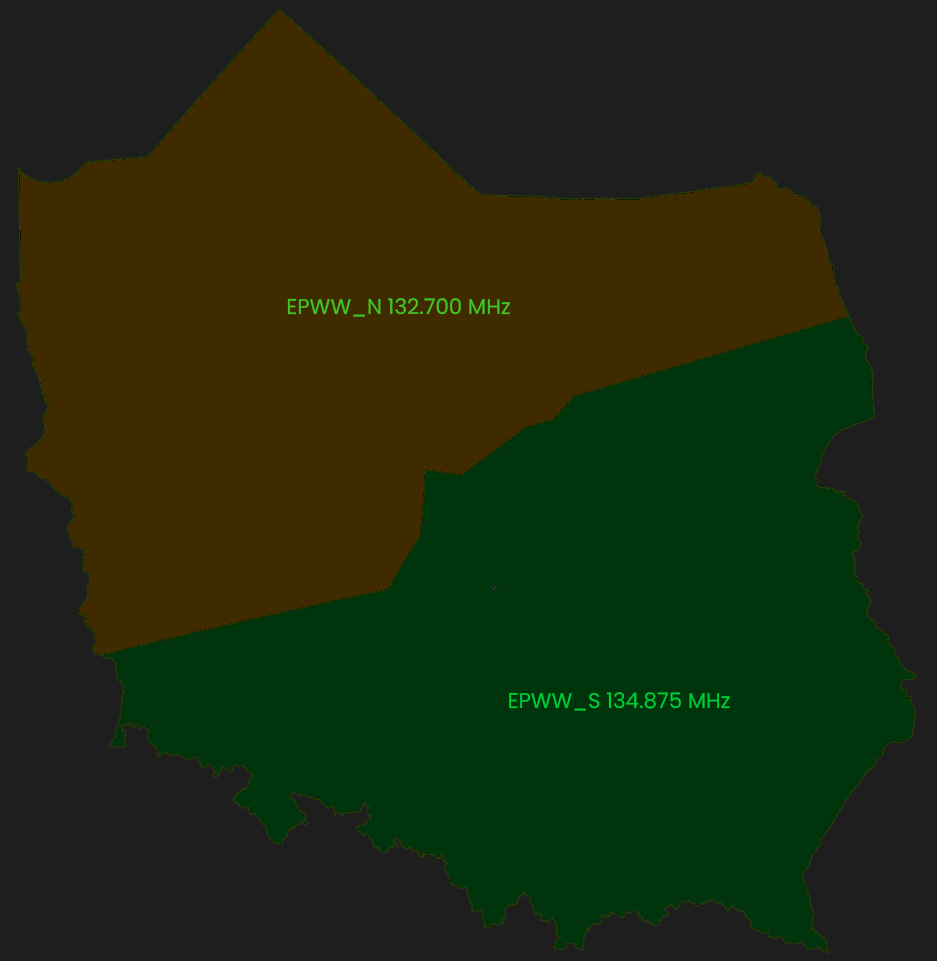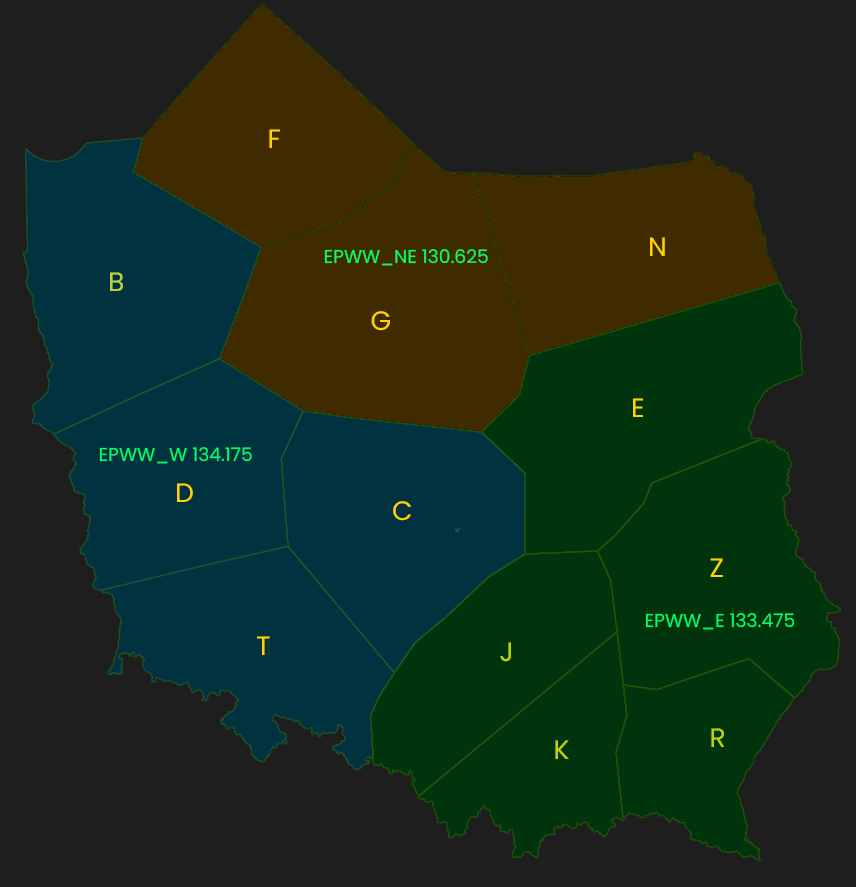¶ Introduction
Area Controller is responsible for separating and managing the overflying transit traffic in our FIR. Or in the absence of APP / TWR / GND / DEL he is also responsible for their duties at the airports within his jurisdiction
Area Controller can also provide FIS below his area of responsibility if he chooses so. It is not obligatory.
¶ Guidelines
Before connecting as ACC (_CTR), you need knowledge of at least the following:
- Delivery SOP
- Ground SOP
- Tower SOP
- Approach SOP
- LoA
- Usage of radar
- Radar Separation
- Procedural separation SOP
- Airspace understanding
- Airspace use plan
- EPWW FIR ACC Sectorization
¶ FIR
Flight Information Region – An airspace of defined dimensions within which flight information service and alerting service are provided.
¶ Area Of Responsibility
ACC is resposible for CTA airspace above FL095. And top-down service for the inactive stations below.
¶ ACC Sectors
In the real world FIR EPWW is divided into 12 sectors. Each can be further subdivided into 2 - Upper and Lower, giving total of 24 sectors. Depending on the amount of traffic they can be combined or separated, although IRL usually pre-planned sector configurations comprising of those 12 are used.
On IVAO we don't have such huge amount of traffic, nor controllers, therefore currently we have only 3 configurations: Full, North and South.
- Full EPWW_CTR on 125.450 MHz covering whole FIR.
- Upper EPWW_U_CTR on 130.875 MHz responsible only within CTAs above FL095.

- North EPWW_N_CTR covering North part of FIR with EPBY, EPGD, EPPO, EPSC, EPSY and EPZG aerodromes.
- South EPWW_S_CTR covering South part of FIR with EPKK, EPKT, EPLB, EPLL, EPMO, EPRZ, EPWA and EPWR aerodromes.

- East EPWW_E_CTR covering East part of FIR with EPKK ,EPKT ,EPLB ,EPMO ,EPRZ and EPWA aerodromes.
- West EPWW_W_CTR covering South part of FIR with EPLL, EPPO, EPSC, EPWR and EPZG aerodromes.
- North - East EPWW_S_CTR covering South part of FIR with EPBY, EPGD and EPSY aerodromes.

¶ Usage of sectors
Depending on the amount of traffic, or your wish, all of the sectors are free for you to open and control. However coordination plays a key role. Basic sectorization is as follows:
- EPWW_CTR / EPWW_U_CTR or;
- EPWW_S_CTR + EPWW_N_CTR or;
- EPWW_E_CTR + EPWW_W_CTR + EPWW_NE_CTR.
As their borders don't perfectly coincide with each other, combining i.e. EPWW_S_CTR with EPWW_E_CTR won't necessarily do the job. Therefore please refer to the rules stated above.
Note - if you still wish to mix them, do it wisely and coordinate appropriately with every adjacent sector and already active ATC.
¶ Separation
The most important part of your job is providing separation. You have to look ahead and predict the traffic situation within the next minutes at minimum.
The minimum separation is:
- 5 NM Horizontally
- 1000 ft Vertically
¶ Achieving the separation
The following methods are used for separating the traffic:
- Altitude control (climbing / descending / maintaining)
- Heading conrol (Directs or Vectors)
- Speed control
- Vertical speed control
¶ Letter Of Agreement
LoA is a document containing allocated altitudes at different border waypoints, agreed with our adjacent FIRs, when an aircraft is about to descend to an airport located close to our border. You can find it here.
¶ Descend Planning
Descend Planning
Another important aspect is planning the descend and calculating TOD of each aircraft. Then it is simply comparing the current height of the airplane with the descend profile and how high it should be to maintain it. There are some rules of thumb that you can use. Note that we are speaking about the standard 3° glide path. This is an essential aspect of your job as an ACC controller, and you need to quickly and efficiently use it.
Rules of thumb:
- 1 - 300ft per 1 NM. Meaning that a pilot will need to descend 300ft in height per 1 NM in distance to maintain 3° GP.
- 2 - Altitude difference / 1000 x 3. If you take the aircraft's Altitude (in feet), divide it by 1000 because we only need number of thousands, and multiply it by 3 - as a result you'll get distance in NM. This is the distance that pilots will cover during descend.
Examples are covered in APC Guidelines
These are basic guidelines. For more information refer to IVAO Documentation and local procedures.
Should you have any questions, IVAO Training Department is always happy to assist you.